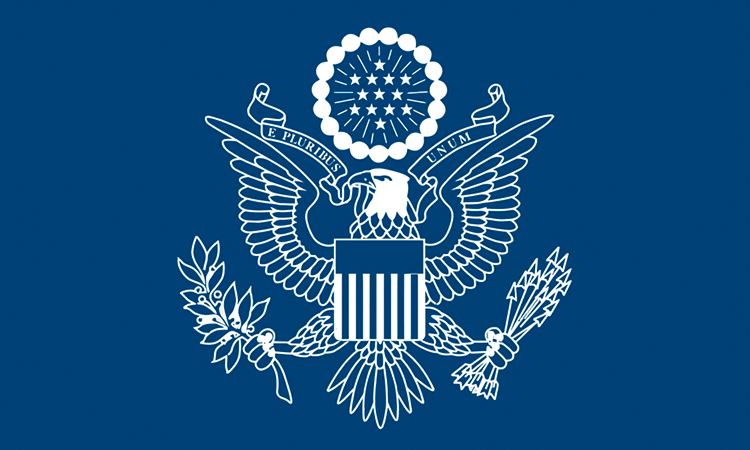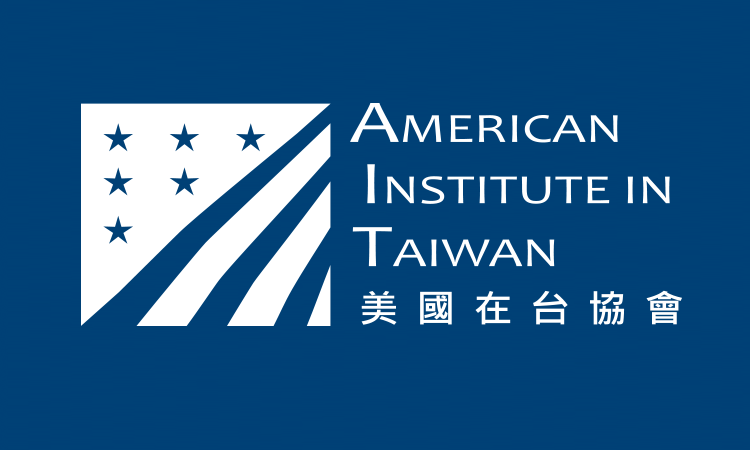Remarks by U.S. Department of Homeland Security Deputy Assistant Secretary Mark Koumans at 2012 International Conference on Homeland Security
Date: 12/05/2012(As Prepared for Delivery)
AIT Official Text #: OT-1212E
Established nearly ten years ago, the Department of Homeland Security or DHS is still a relatively young agency. Its creation represents one of the biggest reorganizations of the U.S. Federal Government since the Department of Defense was created following World War II.
Today, DHS has over 230,000 employees who work to ensure the safety and security of the American people, in jobs that range from law enforcement officers to disaster response coordinators, from those who contribute to our maritime security, to those who ensure our skies remain safe for travelers. Our employees are increasingly focused protecting cyberspace. They guard against terrorist attacks from groups like al Qaeda, or homegrown extremists. They apprehend human traffickers and other criminals. They protect the President and Vice President; they help thousands of immigrants become new citizens of the United States. But what ties these diverse missions together?
Because DHS was created just after 9/11 it will not surprise you that our top mission is to prevent terrorist attacks against the United States. DHS also integrates preventing terrorism into its four other primary missions—securing and managing our borders, enforcing and administering our immigration laws, safeguarding and securing our cyberspace, and ensuring resilience to disasters.
We recognize that achieving domestic security across all of these areas requires efforts that extend beyond our borders. Accordingly, I want to share with you today the key themes that guide my Department’s international engagements, which emphasize the value we place on building collaboration and relationships with our international partners.
International
Internationally, DHS accomplishes those five missions I mentioned by:
- Working with international organizations to adopt common security standards;
- Concluding agreements with key partners to implement security cooperation; and
- Enabling partners to enhance security through assistance and training.
In order to prevent threats from materializing, we work with our international partners to try to identify, detect, prevent, and respond to threats, many of which threaten not only the United States but also our partners. To this end, we work with foreign partners to respond operationally to security threats and to share knowledge and expertise that will ultimately improve our respective capabilities.
In this globalized world, a threat to one country can quickly become a threat to others. At the same time, the global financial downturn has meant that all countries need to make sure they use their funds wisely. Therefore international cooperation is more important than ever. Let me highlight a few of our efforts.
Port Environment
The United States Coast Guard (USCG), part of DHS, working within the framework established by the International Maritime Organization, exchanges information and shares best practices to align international maritime security standards with the IMO International Ship and Port Facility Security (ISPS) Code. The USCG works closely with all of our regional trading partners, including its partners in Taiwan, to promote the implementation and enforcement of the ISPS code and to enhance maritime security in ports that participate in global trade.
Air Environment
Secondly, let me now shift to aviation security. Time and again we have seen that terrorists target aircraft, from the “Underwear Bomber” plot on Christmas Day 2009 to the 2010 plot to ship a bomb in a printer’s toner cartridge. Passenger and air cargo movements are growing rapidly – the Asia-Pacific region surpassed North America as the largest aviation market in 2009 and in 2011, and the region boasts ten of the top thirty airports, measured in terms of passenger travel. The security of this travel and infrastructure requires high standards for vigilance. The Transportation Security Administration (TSA), another part of DHS, has developed an effective series of practical tools such as the intelligence-driven, risk-based screening methods, Foreign Airport Assessments, and the deployment of personnel overseas to work with international partners and support airport and border security efforts and create multiple layers of security structure. TSA works closely with the International Civil Aviation Organization (ICAO) to develop high standards and to encourage implementation. TSA is fortunate to partner with Taiwan and other airports and airlines in the region towards aviation security.
Thirdly, let me mention DHS Trusted Traveler and Trusted Trader programs.
These programs exhibit two key guiding DHS principles: (1) an intelligence-driven and risk-based approach to assessing threats and (2) the concept that security and facilitation are not in competition but are two goals to be achieved simultaneously. As many of you know, last month Taiwan became the newest member of DHS’s Visa Waiver Program (VWP). What you may not know is that, in order to qualify for the VWP, Taiwan had to take a number of steps, which are required by U.S. law, to increase its immigration and travel security and its security cooperation with the United States. For example, Taiwan and the United States developed a mechanism to prevent the use of lost and stolen Taiwan passports from being used to travel to the United States. Another example is our concluding an agreement to share biographic and biometric data on criminals and terrorists.
Let me now mention Global Entry, a DHS program for U.S. citizens, lawful permanent residents, and growing number of foreign citizens that allows expedited clearance for pre-approved, low-risk air travelers upon arrival. Global Entry members are able to use a kiosk to clear through U.S. immigration formalities and get through the airport quickly. Over one million travelers are now members of Global Entry. In exchange for a security check, the passenger travels more quickly and again we have both travel facilitation and better security.
Last January President Obama encouraged DHS to expand the Visa Waiver Program and Global Entry, and DHS has done that. Over one million people are now members. Further, these programs allow the U.S. and our international partners to focus our security efforts on those individuals about whom we know the least.
Now let me turn to trusted trader programs. Many countries, including the United States, have programs to certify shipping and trading companies that reach high security standards and in return to give them preferred security or customs clearance. TSA has a program that assesses national cargo security programs to determine whether the security procedures of the other country are comparable to TSA security procedures. If they are, TSA can extend mutual recognition and facilitated security clearance for air cargo. Another part of DHS, Customs and Border Protection or CBP, has a program called the Customs-Trade Partnership against Terrorism, or C-TPAT. In this case CBP assesses the security procedures of trading companies to determine whether they meet a high standard. CBP also compares its security requirements with foreign partners. If a foreign partner has a program that also certifies trading companies with comparable security procedures, CBP can agree to mutual recognition to expedite the goods from those foreign companies and those foreign partners. As some of you know, just a few days ago, on November 26, Taiwan became a partner under C-TPAT as the two sides extended mutual recognition to each other. This means that in the future, Taiwan companies that meet a high security standard will be able to clear U.S. Customs more quickly. Once again, we see security and facilitation going hand-in-hand.
Over the last few years, CBP has also established mutual recognition with Japan, New Zealand and South Korea. CBP works closely with the World Customs Organization toward high international standards for trusted trader programs.
Fifth, let me mention law enforcement cooperation. DHS has become the largest U.S. law enforcement agency and has primary responsibility for smuggling and trafficking crimes that cross the U.S. border, including cyber crimes and financial crimes. As globalization increases, two other parts of DHS, Immigration and Customs Enforcement (ICE) and U.S. Secret Service, would not be able to succeed without relationships with international counterparts to disrupt criminal organizations and tackle counterfeiting, weapons proliferation, child sex tourism, intellectual property rights violations, and human smuggling. These criminal efforts try to use many of the same gaps and weaknesses that terrorists try to exploit. ICE and the Secret Service work with partners in Taiwan and around the world to fight these crimes.
Information Sharing Collaboration
Sixth, I would also like to highlight the importance of information sharing arrangements such as the Preventing and Combating Serious Crime (PCSC) agreement we have concluded with Taiwan and other partners. PCSC agreements establish the framework for 21st century law enforcement cooperation by providing reciprocal, electronic access to fingerprint databases on a query (hit/no hit) basis. The PCSC agreement creates a law enforcement partnership that enables both sides to more quickly and efficiently prevent and investigate crime. At the same time, the PCSC agreements set a very high standard for privacy and civil liberties protections.
Seventh, let us turn to cyberspace because the physical movement of goods and people across our borders is no longer the only way that products, services, and ideas cross international borders. That is why DHS is helping to support a secure environment for the marketplace of cyber commerce. We are deploying the latest tools across the federal government to protect critical systems while sharing timely and actionable security information with public and private sector partners to help them protect their own operations. DHS is protecting the computer networks of the civilian side of our government and leading the effort to protect our nation’s critical information infrastructure – the systems and networks that support the financial services industry, the electric power industry, and the telecommunications industry, to name a few. And we now have dedicated representatives from these and other key economic sectors working at DHS alongside our own cybersecurity experts to prevent, identify, and address cyber incidents. DHS also works with other U.S. agencies and the international community to mitigate the risks and reduce the potential for a malicious actor to be successful. In 2011, DHS via the Computer Emergency Readiness Team (CERT) responded to more than 100,000 incident reports, and released more than 5,000 actionable cybersecurity alerts to our federal, state, and private sector partners – these numbers will undoubtedly increase. We will continue working with our international partners to share expertise and resources to combat electronic crimes such as identity and intellectual property theft, network intrusions, and financial crimes. In 2011, the Secret Service prevented $5.6 billion in potential losses through financial crime investigations and $1.5 billion through cyber crime investigations. As we increasingly rely upon our connectivity to facilitate commerce and face pressure from illicit financial activity, these numbers will increase as well. DHS is pleased to be able to work with Taiwan and other partners in groups such as the Meridian Process and the APEC TEL (Telecommunications and Information Working Group).
Lastly, let me turn to resilience. At DHS we build the preparedness of our nation – to both natural disasters and terror attacks – through prevention, protection, mitigation, response, and recovery. Each of these stages helps ensure the resiliency of our nation. In the United States, 85% of critical infrastructure owners and operators are part of the private sector, so we rely heavily on close, collaborative relationships with industry partners through the DHS Office of Infrastructure Protection. These relationships ensure that together, the government and private sector are able to develop protective measures, discuss emerging threats, and respond to disasters in a timely and efficient manner.
We are, even now, continuing our efforts to recover from October’s devastating Hurricane Sandy that hit a large portion of the U.S. East Coast, especially in New York and New Jersey. The work of DHS through its agency FEMA (Federal Emergency Management Agency) has enabled U.S. communities to recover more quickly, reduce costs, and reduce the loss of life. But we can always improve.
FEMA has changed how its work with businesses before, during, and after a catastrophic event. We have seen that the more we do to make sure we are prepared for a disaster, the faster we will rebound and this has immense economic consequences. In all of these instances we have shown that we are dedicated to helping communities rebuild after disaster strikes. Building resilient communities is our approach to guarantee that, should a man-made or natural disaster strike, we can respond effectively.
I would like to take this opportunity to recognize and thank our friends from Taiwan as well as those in Europe, Israel and Malaysia as other partners worldwide for your generous donations through the Red Cross and other humanitarian relief organizations responding to Hurricane Sandy – this is a real testament to our shared cause in humanitarian relief operations.
Looking Ahead
Let me now conclude by looking ahead.
The movement of people, goods, and ideas has always driven the development of nations and provided opportunities for economic growth and prosperity. Globalization has brought us the more rapid movement of those people, goods, and ideas. Within the American economy, trade with our international partners accounts for roughly one quarter of our GDP. In other countries, the percentage is even higher. So, in other words, our economies are dependent on our ability to secure and facilitate the flow of people, goods, and ideas to and from our shores.
Simply put, our homeland security and our economic security go hand-in-hand.
Accordingly, security measures should be designed to facilitate the safe and efficient movement of people and goods while securing our critical infrastructure.
We have learned painful lessons that a passenger originating in Ghana, or a piece of cargo from Yemen, can threaten a plane bound for the United States. We have also witnessed that massive flooding in Thailand can disrupt the market of computer hard drives, and an earthquake and tsunami in Japan can stop automobile assembly lines in the United States and elsewhere.
We must therefore all continue to look both within and beyond our physical borders and develop strategies that keep us all safe from threats that can originate both here or on the other side of the world. As the U.S. department charged with protecting cyber networks and managing the international flow of people and goods, DHS has been transforming the relationship between security and trade.
We will continue our risk-based, information-driven approach to security, so that what we know about a piece of cargo or a passenger allows us to better assess its risk, and identify threats at the earliest point possible. We can and will enhance security while streamlining trade and travel and keeping costs down. We will continue to build a more secure and resilient nation, while also maintaining the open flows of commerce, travel, and ideas.
We will continue to work closely with partners who share the same challenges. That is why conferences such as this one are so valuable. The dialogues that we have here will open up opportunities for innovative and collaborative approaches to address these shared threats.
Thank you for your time today, and I look forward to continuing this discussion with the panel.















![Video Thumbnail [Recovered]-01](../../wp-content/uploads/sites/269/Video-Thumbnail-Recovered-01-750x450.jpg)



